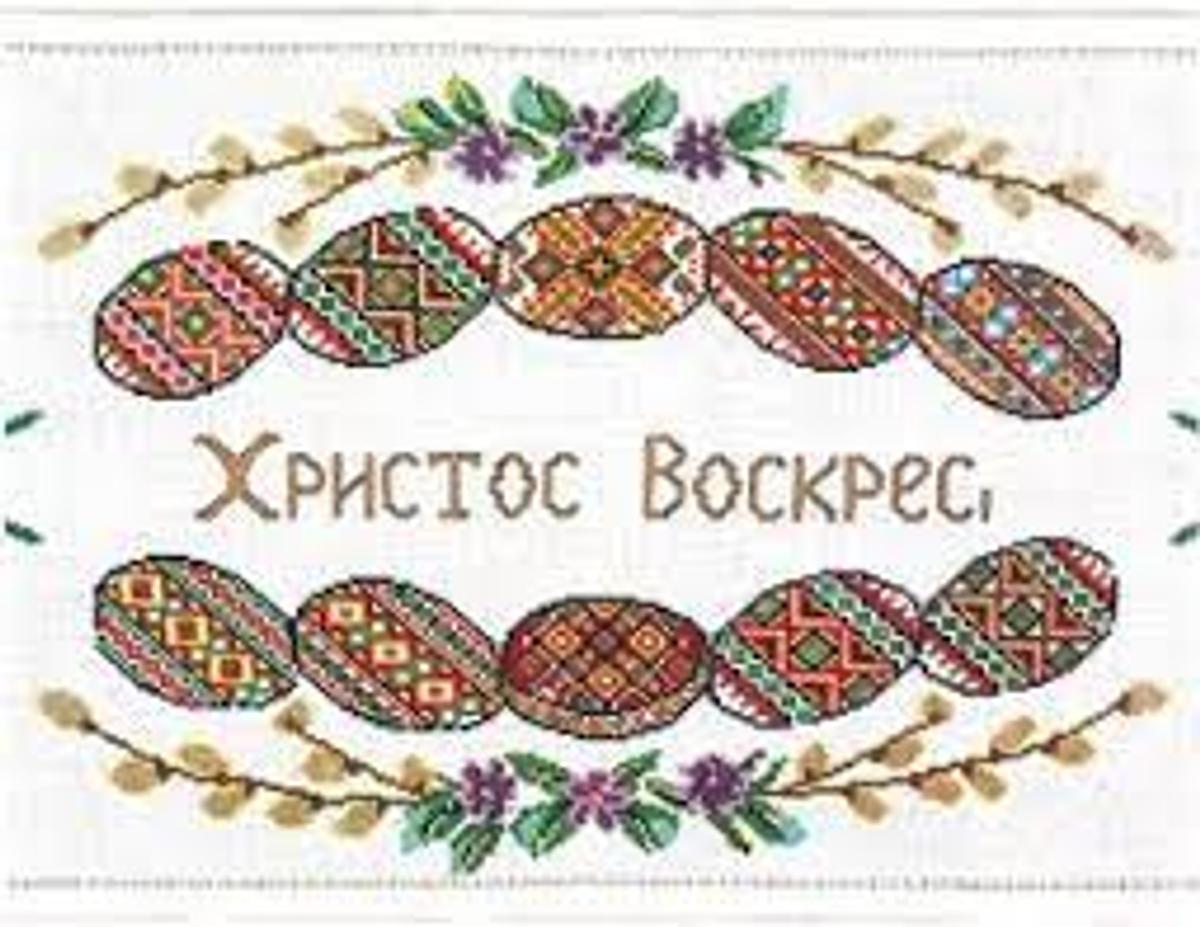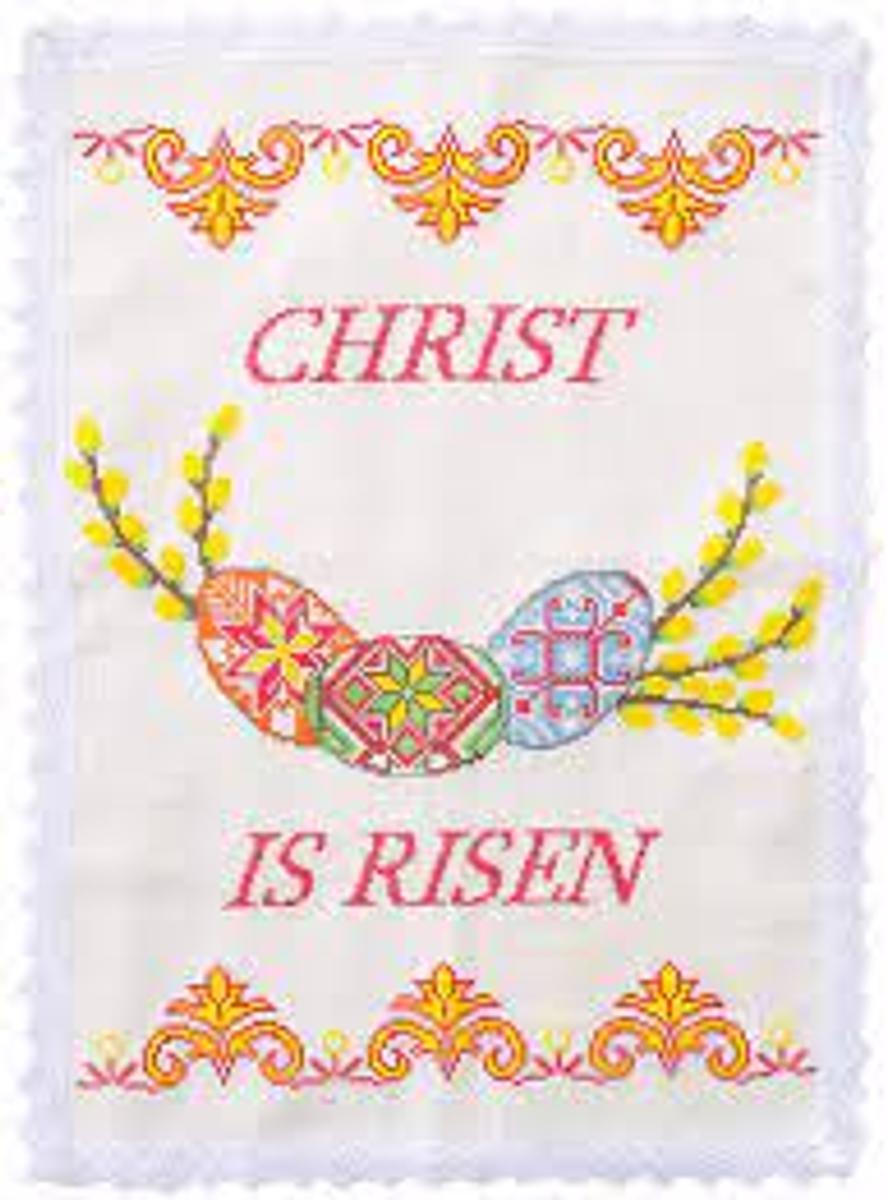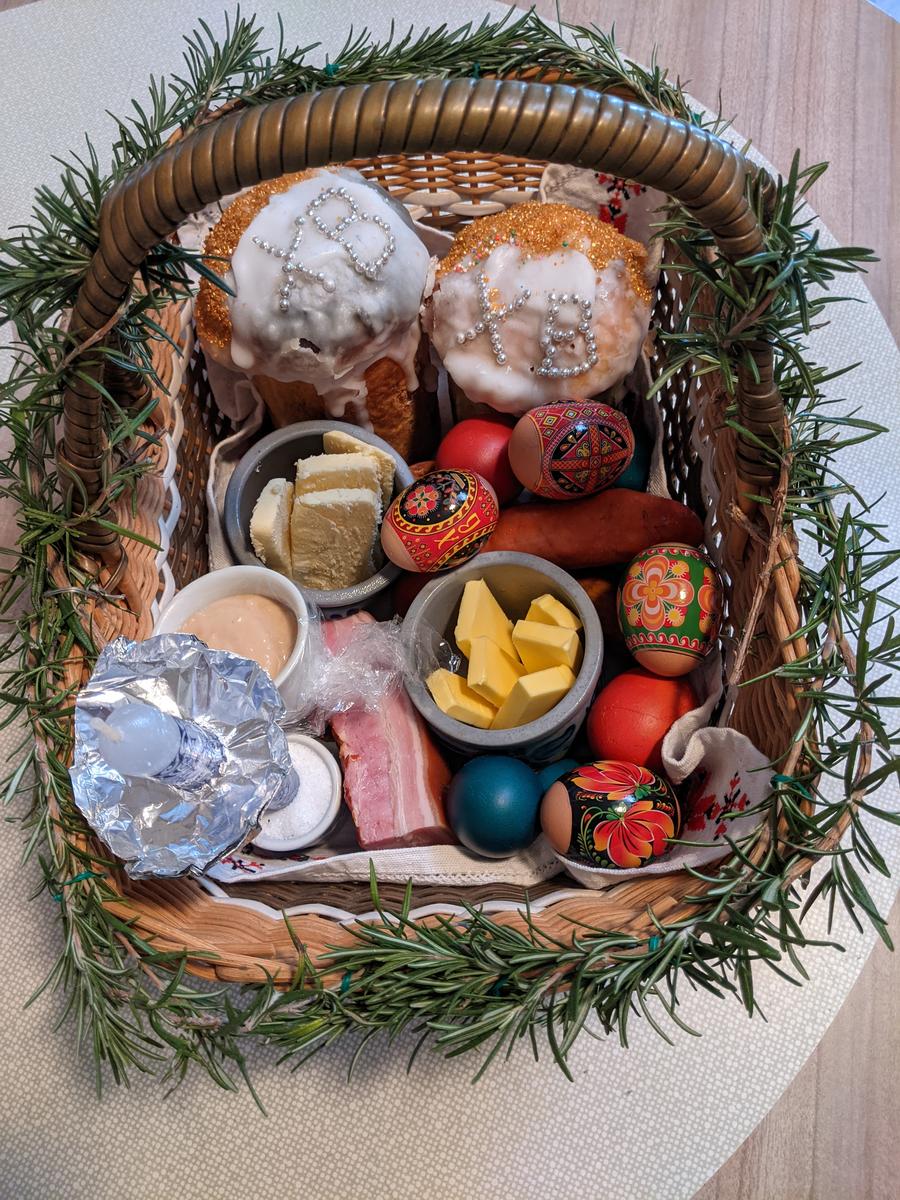Library News

Christian Easter Traditions
Blessing of the Easter food baskets on Holy Saturday or Easter morning is a tradition among Roman Catholic and Orthodox Christian Central and Eastern Europeans, including Czechs, Croatians, Hungarians, Lithuanians, Poles (who call it swiecenie pokarmow wielkanocnych), Russians, Rusyns, Slovaks, Slovenes, and Ukrainians.
There are samples of symbolic foods lining the basket. Since Roman Catholics and Orthodox Christians fast during Lent, not one morsel of this blessed food is eaten until after Mass on Easter Sunday when it becomes the traditional Easter breakfast.
Symbolic Basket Items
While tastes vary by region and family, the basket usually contains certain items: butter, bread, pysanky (decorated) eggs, sausage, ham and/or lamb, smoked meats, cheese, salt, and cake. A candle is placed in the basket so it can be lit during the blessing, and some families tie a bow or ribbon around the basket handle. Everything is covered with a richly embroidered cloth that rests atop the food.
Butter (Masło)
Butter is symbolic of the goodness of Christ that we should emulate toward others. It can be shaped into a fancy lamb mold or simply packed into a glass container with cloves arranged into a cross on the top.
Bread (Paska)
The name paska came from the Jewish Passover feast known as pesach, and from the Greek version of the word—pascha. Paska also is the word for a round loaf of sweetened yeast bread or cake studded with orange and lemon peel and raisins. It is a symbol of Jesus Christ, the Bread of Life.
Horseradish
Horseradish, especially mixed with grated beets, is symbolic of Christ's passion and the blood he shed. The horseradish can be placed in a decorative bowl for inclusion in the basket.
Hard-Cooked Eggs and Pysanky
These hard-cooked eggs, dyed red in the Orthodox Christian faith, and decorated elegantly using the wax-resist method, are symbols of Easter, life, and prosperity, and Christ's Resurrection from the tomb. The decorations are symbolic: wheat for good health and good harvest, the sun for life, fortune and growth, a ladder for prosperity and prayer, pine needles for health and eternal youth, the rose symbolizes health and caring, the diamond is for knowledge, the fish is for Christianity, crosses are symbols for Christ in the world, ans curls are symbols of protection.
Sausage
Sausage, either fresh or smoked, is symbolic of God's favor and generosity. It is always present in the basket.
Ham or Lamb
Ham is symbolic of great joy and abundance. Some households prefer veal or lamb, which reminds Christians that the risen Christ is the Lamb of God.
Smoked Bacon
Bacon, with its great fattiness, is a symbol of the overabundance of God's mercy and generosity. The Slovak call bacon slanina, while the word is bekon in both Russian and Ukrainian.
Salt
Salt, a necessary element in physical life, is symbolic of prosperity and justice and is included in the basket to remind us that people are the flavor of the earth.
Cheese
Cheese is symbolic of the moderation Christians should have at all times. Usually, fresh dry curd or farmer's cheese (not aged) is placed in the basket, but another type of cheese, such as hrudka (also known as hrutka, sirok, and cirecz) might be included.
Candle
A candle, which will be lighted in a church at the blessing of the baskets, represents Christ as the Light of the World.
Easter Basket Cover
Although traditions vary from family to family about what goes into the basket that is to be blessed on Holy Saturday or Easter Sunday, what seems to remain constant is the colorful ribbons and greenery, pussy willows, or dried flowers attached to the basket as signs of joy and new life in the season of spring and in celebration of the Resurrection.
The other must is the richly embroidered cover, symbolizing Christ's burial shroud, that goes over the basket. It's usually made of linen or other fine cloth and is embroidered with religious symbols related to the Resurrection and the celebration of Easter. These basket covers are passed down from generation to generation. A Ukrainian paska cover is similar to a rushnyk or embroidered towel except it has Easter symbols on it.
References
Learn Religions. Slovak-Ukrainian-Russian Easter Basket Food
2022. Retrieved from https://www.learnreligions.com/traditional-easter-basket-for-blessing-4161079
Tingen, Terri. "Pysanky: Ukrainian painted eggs." Faces: People, Places, and Cultures, vol. 18, no. 7, Mar. 2002, pp. 30+. Gale In Context: High School, link.gale.com/apps/doc/A84367158/SUIC?u=61stpeters&sid=bookmark-SUIC&xid=0582efd1. Accessed 3 Apr. 2022.
Joyce Sendeckyj
Head of Library



